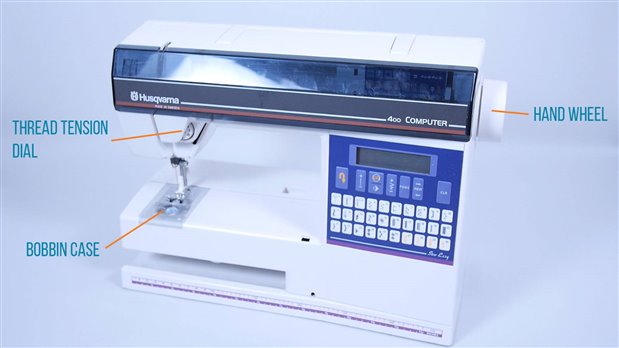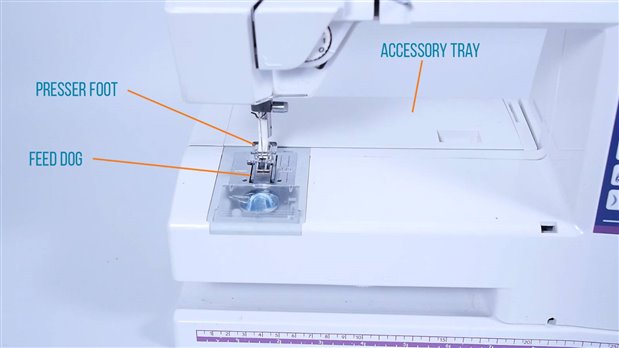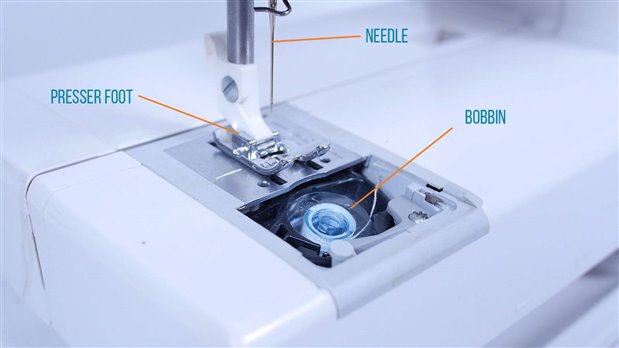Although I have used sewing machines in the past, it was a long, long time ago, and nothing quite like this one. If you are like me and need a quick refresh on the terminology of some of the parts of a sewing machine, you are in the right place:
Hand Wheel - Originally a cranked handle that you would have to turn yourself, thankfully it is now electrically driven. It is normal to turn the hand wheel to position the needle when starting and finishing stitching.
Thread Tension Dial - A mechanical grip on the thread that defines how tight the final stitch is. Too tight and the fabric may bunch or the thread fail to feed. Too loose, and it won't hold the fabric sufficiently.
Bobbin Case - Under the plate or table, the bobbin case is where (as far as I can tell) black magic happens to allow a continuous thread to be stitched through the fabric.
Reverse Switch - Most sewing machines have a physical reverse switch, these feed the dog forwards to "lock" the start and end of a running stitch. This machine has an electronic reverse button instead.
Presser Foot - The presser foot can be raised or lowered using a lever to hold the fabric flat, stop it being pulled up by the needle and press it against the feed dog:
Feed Dog - The feed dog is a little saw tooth plate that moved back and forward, as well as slightly up and down to feed the fabric back the correct amount for the desired stitch.
Accessory Tray - (On good machines) It is quite common to have a removable tray that can be used to extend the table and hold spare bobbins and accessories.
Bobbin - A small spool that holds the thread that will form the underside of the stitch. The thread from the needle (and main reel) is pushed down through the fabric. The bobbin case catches this thread and runs it around the outside of the bobbin creating a single twist together. The needle then raises, the dog feeds the fabric and the process is repeated.
Not Shown:
Pedal - Almost all sewing machines use, or can use a control pedal, as it sounds offers start / stop and speed control. This allows both hands to be used to feed and control the fabric.
Bobbin Winder - All sewing machines I have used have a bobbin winder. A small mechanism to quickly wind some thread from your main spool or reel to a bobbin. They have all had an auto stop switch when they are full so you don't end up in a very big mess!
Types of stitch - Sewing machines are normally capable of creating 2 basic types of stitch, straight and zip zag. Straight stitch may be used for detail work like attaching piping to a cushion (the ribbed or rope type stuff that runs round the edges). Zig zag stitches can be stronger, use more thread, but can also offer the fabric to stretch slightly along the length of the stitch.
This was quite a complicated machine by comparison to a "normal" or "basic" machine. I am looking forward to trying an "overlocker" in the future...




Top Comments
-

Andrew J
-
Cancel
-
Vote Up
+1
Vote Down
-
-
Sign in to reply
-
More
-
Cancel
Comment-

Andrew J
-
Cancel
-
Vote Up
+1
Vote Down
-
-
Sign in to reply
-
More
-
Cancel
Children